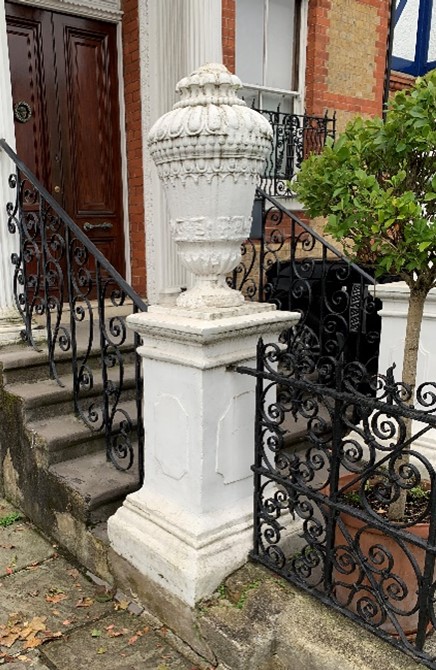Thornhill House

History
Thornhill House is a Grade II listed building in private ownership. It was built c.1860 by Mr Wakefield, a Kensington builder, incorporating elements from Wandsworth Manor, a late 17th century house much remodelled c.1720 and eventually demolished in 1890.
Mr Wakefield was advised to move to Putney for his health, just as Wandsworth Manor was being demolished. He reinstalled large quantities of fine panelling, a sumptuous staircase and fine wall paintings.
The Victoria County History records that Wandsworth Manor was built on the summit of East Hill, Wandsworth, c.1670 for a Low Country refugee, Peter Paggen, who occupied the house until his death in 1720. Its site is not one of the four medieval manors of Wandsworth, but the very grandeur of the house earned it the name. The original house was attributed to Sir Christopher Wren, and the paintings have been attributed to James Thornhill, who has given his name to the present house.
It is probable that during the removal and reinstatement works, the early paint finishes may have been stripped from the salvaged architectural elements.

The Front Porch & Urns
It is assumed that the existing porch (entablature and columns) was salvaged from Wandsworth Manor. The structure is presently painted in a brilliant white paint which was probably applied sometime during the last ten/twenty years. It should be noted that when the porch was first erected at Wandsworth Manor it was probably painted in a stone-coloured paint. Indeed, it may have been sanded – a process whereby the wet paint is dusted with sand to imitate the texture of stone.
It is likely that the porch has been repeatedly painted to prevent the decay of the timber substrate.
The bright white in common use today is a titanium white based alkyd resin paint. This modern paint was not readily available until after WWII. The modern white paint currently applied to the porch is rather bright. Although this is a matter of taste, I suggest it would be more appropriate to redecorate the porch in a light stone colour or an off-white to acknowledge something of the original decorative conventions for such elements. For uniformity, the two urns may be decorated in the same colour.
